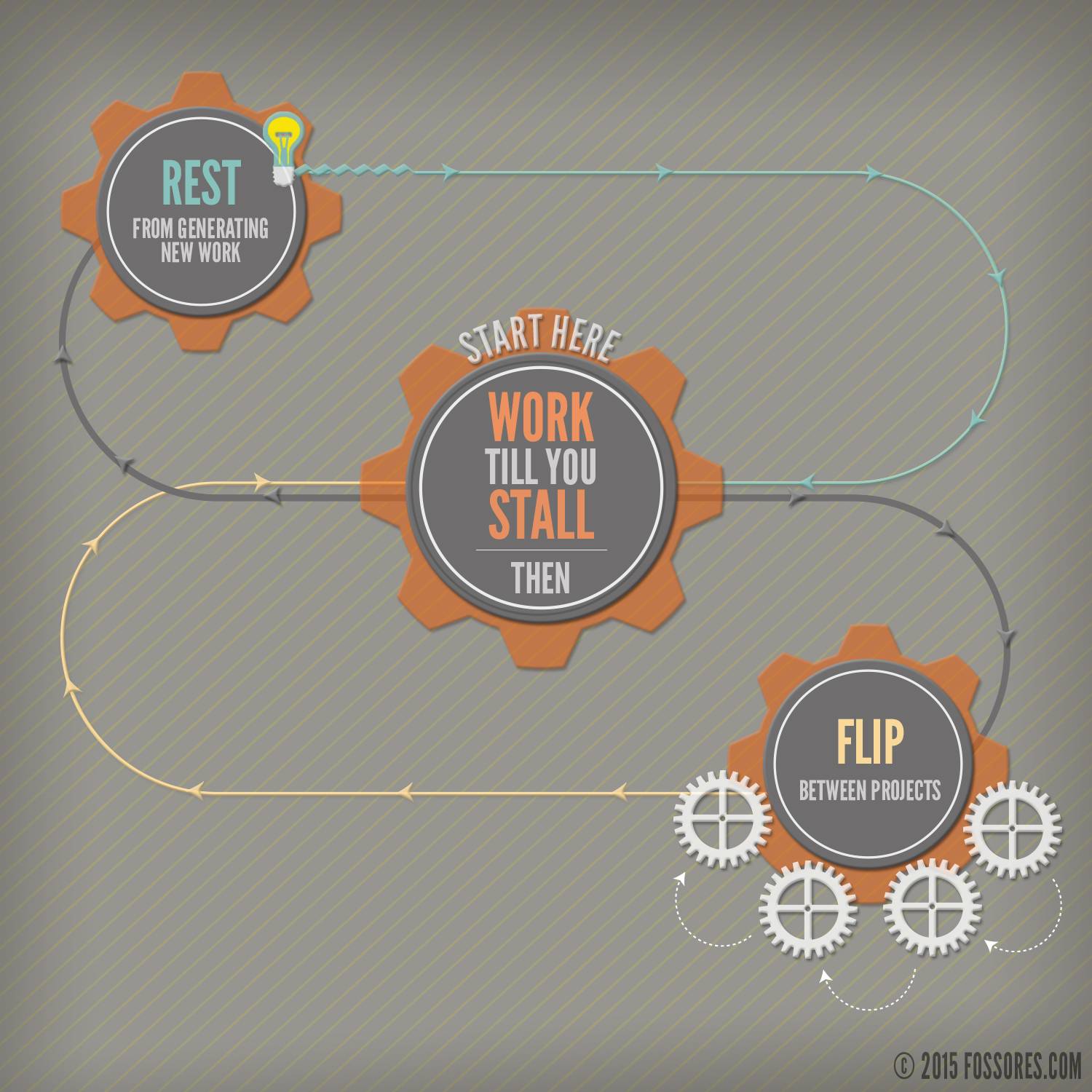We all have times of each day when we are more (and less) productive. Typically we can divide our days into morning, afternoon, and evening, adding early morning (before work) and late evening (after everyone else has gone to bed). If you were to rank each of those times of day according to your productivity, which would come first? That’s when you should do the work that’s most important. Conversely, the time of day when you are least productive should be the time you schedule for the work of least significance. Counseling, for example, while very important, is not something I do terribly well. Neither does counseling have the same requirement upon my performance as leadership or teaching. Consequently, I try to schedule counseling appointments for the afternoon, when I am naturally less productive.
Creative thought ebbs and flows and is most enhanced by periods of frequent inactivity and relaxation. That’s why things like hot showers and midday naps tend to increase our creative capital. That’s why some businesses have ping pong tables and espresso machines in their offices. The trick is to go hard after a piece of work until you feel the creativity ebb, then change to something else immediately. Don’t force your thoughts. Don’t strive. Go hard when you’re on, and when you’re not on, you’re off.
You can give yourself mental and creative breaks in two ways: by doing no work, or by doing different work. Not working should still be active—running errands, exercising, having meetings, playing foosball—but the important point is that you’re allowing your brain to rest from its primary task: thinking about your big idea.
Doing different work simply means switching major tasks. In my office I have three whiteboards, two desks, and a couch. Each of these six spaces are designed for me to do different work. I prepare sermons at one desk and answer emails at the other. I study on the couch. I plan our leadership gatherings at one whiteboard, overall strategic initiatives at another, and leadership development on the third. Outside my office, where Mel and Amy work, are another four whiteboards, a chalkboard, and a corkboard. The whiteboards are for planning each of the upcoming special projects our team will accomplish. The corkboard is for in-depth planning on the special project we’re currently completing. The chalkboard is for scheduling workflow.
The specific purposes of each workspace sometimes vary, but the general point remains the same. Having multiple spaces for multiple projects allows me to switch very easily from one to the next, and to pick up my thinking where I last left off.
Sometimes people visit our offices and are surprised by how little I do and yet how much I seem to accomplish. They see me joking with Mel and Amy for an hour, or napping on my couch, or smoking a pipe while staring out the window. However, despite the appearance of doing nothing, my mind is working nonstop. While I’m joking, my mind is solving problems without me being fully conscious of the process. Mel and Amy can attest to my tendency to jump up in the middle of a conversation and begin scribbling on a scrap paper I dragged out of the trash.
Because working your ass off doesn’t mean being a slave to your office chair. Sometimes it means napping at work. High capacity thought requires either resting or flipping, and sometimes both.
fossores
Related posts
Categories
Category Cloud
Tag Cloud
Recent Posts
- Victors and Victims November 6, 2018
- 3 Hacks for Happiness October 29, 2018
- Hope Against Death September 20, 2018
- The Shape Of The Cross September 19, 2018


